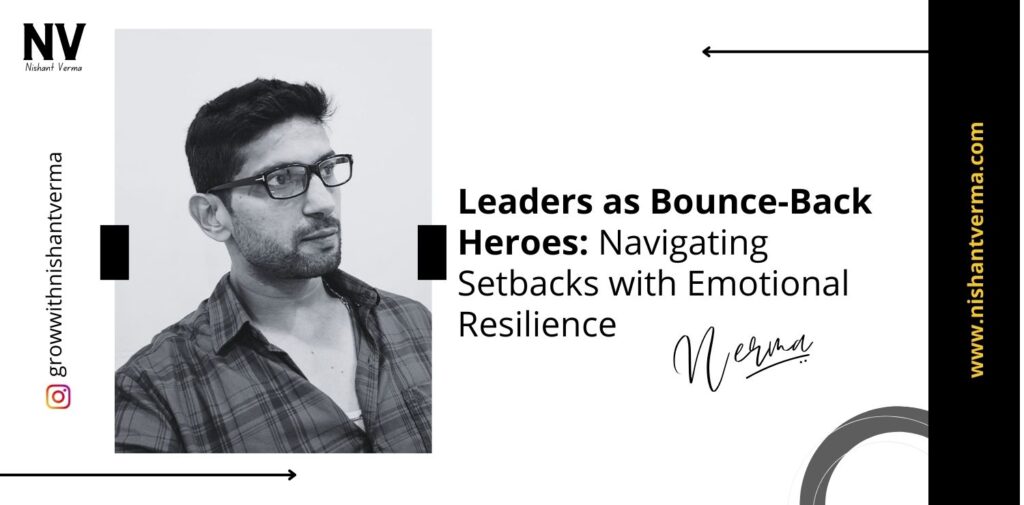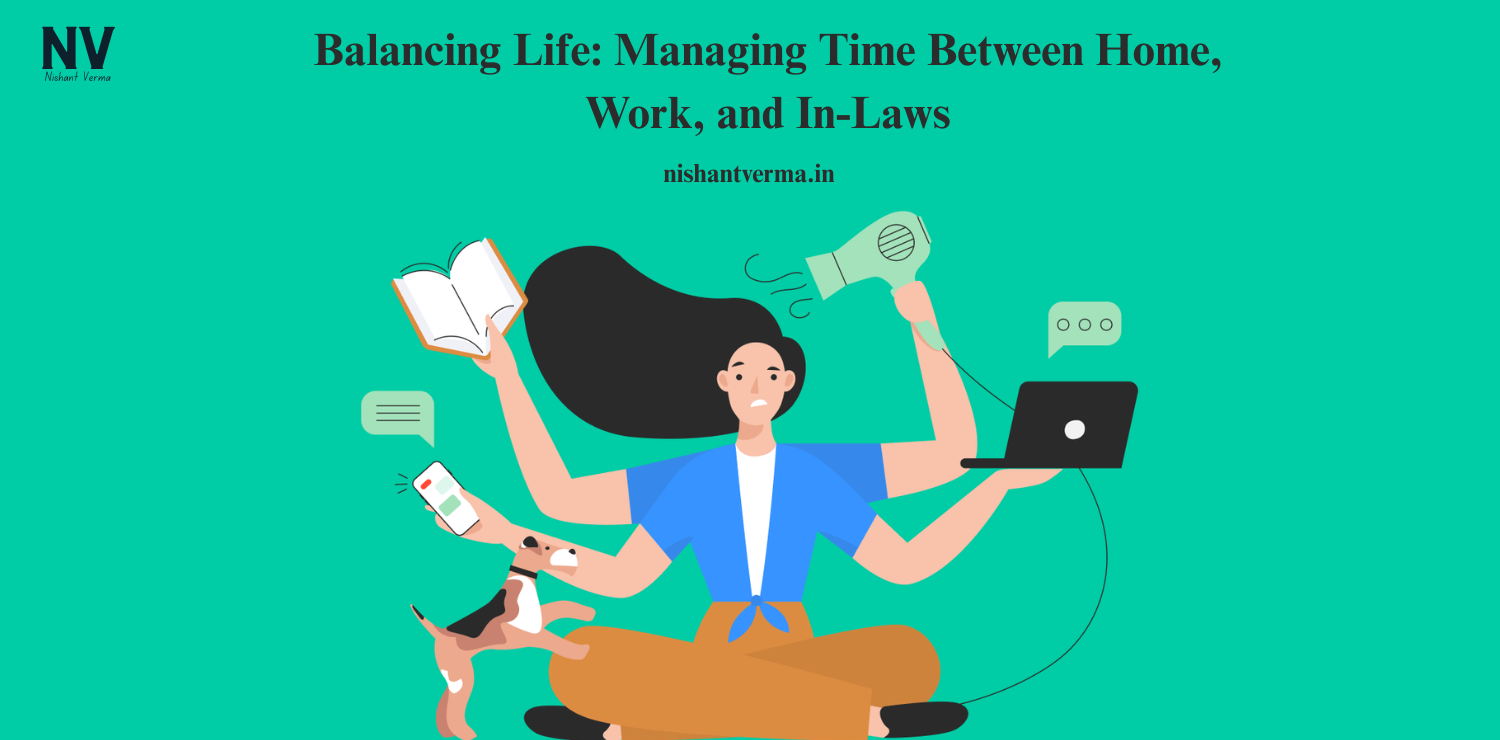Imagine leadership as a trampoline and emotional resilience as the ability to bounce back from life’s challenges. This article explores the simple yet profound concept of leadership and setbacks with emotional resilience, uncovering how leaders can develop the strength to navigate setbacks. Join us on this journey of understanding and mastering the art of bouncing back.

I. The Power of Emotional Resilience in Leadership
Emotional resilience is like a superhero cape that leaders wear to face challenges. It’s the ability to bounce back, learn, and grow from setbacks. Let’s simplify why emotional resilience matters for leaders
- Adaptability: Resilient leaders can adapt to unexpected changes.
- Problem-Solving: They navigate challenges with a clear mind, finding effective solutions.
- Team Morale: A resilient leader inspires and uplifts the team during tough times.
II. The Role of Leadership in nurturing setbacks with emotional resilience
Leaders are like gardeners, nurturing setbacks with emotional resilience in themselves and their teams. Here’s how leaders contribute:
- Leading by Example: Resilient leaders model coping strategies and a positive mindset.
- Creating a Supportive Culture: Leaders foster an environment where team members feel supported during difficult times.
- Providing Resources: Offering tools and resources for emotional well-being.
III. Understanding Emotional Resilience: A Simple Breakdown
Setbacks with emotional resilience is not a mysterious quality; let’s break it down into simple components:
- Self-Awareness: Recognizing and understanding one’s emotions.
- Adaptability: Being flexible and open to change.
- Positive Outlook: Maintaining a hopeful perspective.

IV. The Emotional Resilience Process: Navigating Setbacks with Grace
Bouncing back from setbacks follows a process; let’s break it down into simple steps:
- Acknowledge Emotions: Accept and acknowledge emotions that arise from setbacks.
- Reflect: Take time to reflect on the situation and its impact.
- Seek Support: Reach out to a trusted friend, mentor, or colleague.
- Learn and Adapt: Identify lessons from the setback and adapt strategies for the future.
- Move Forward: Take positive steps forward, focusing on growth and improvement.
V. Types of Setbacks in Leadership: Recognizing Challenges
Setbacks come in various forms; recognizing them helps leaders navigate effectively:
- Professional Setbacks: Challenges related to work tasks or projects.
- Personal Setbacks: Issues outside of work that impact well-being.
- Team Setbacks: Difficulties within the team that affect collaboration.
VI. Debunking Myths about setbacks with emotional resilience: Clearing the Air
There are misconceptions about resilience; let’s clear a few:
- Born Resilient: Resilience is not solely innate; it can be developed and strengthened.
- Always Positive: Being resilient doesn’t mean avoiding negative emotions but effectively managing and learning from them.
- Isolation is Strength: Seeking support is a sign of strength, not weakness.
VII. Challenges in Building Emotional Resilience: Facing Realities
Building resilience has its challenges; acknowledging them is the first step:
- Fear of Failure: Overcoming the fear of failure and seeing it as a part of the learning process.
- Coping Mechanisms: Finding healthy coping mechanisms instead of relying on unhealthy habits.
- Patience: Developing resilience takes time; it’s a gradual process
VIII. Strategies for Leaders to Cultivate Emotional Resilience
Leaders can cultivate setbacks with emotional resilience with practical strategies, such as:
- Mindfulness Practices: Incorporating mindfulness and meditation into daily routines.
- Professional Development: Continuous learning and skill-building enhance confidence.
- Social Connections: Nurturing strong social connections and support networks.
IX. Case Studies: Real-Life Examples of Emotional Resilience in Leadership
Let’s draw inspiration from real-life leaders who demonstrated setbacks with emotional resilience:
- Leader A: Faced with a project failure, Leader A openly acknowledged the setback, sought input from the team, and collaboratively developed an improvement plan.
- Team B: Team B, led by a resilient leader, navigated internal conflicts by fostering open communication and using setbacks as opportunities for team-building.
- Organization C: Organization C, facing financial challenges, embraced transparency, involved employees in problem-solving, and successfully turned the situation around.
X. Overcoming Burnout: Strategies for Leaders to Protect Well-being
Burnout is a common challenge; leaders can overcome it with strategies like:
- Setting Boundaries: Clearly defining work hours and personal time.
- Encouraging Breaks: Promoting regular breaks and vacations for rejuvenation.
- Delegating Tasks: Distributing responsibilities to prevent overwhelming workloads.
XI. The Role of Emotional Intelligence in Resilience: A Dynamic Duo
Emotional intelligence complements resilience; leaders can enhance both by
- Self-Awareness: Recognizing setbacks with emotional resilience responses to setbacks.
- Empathy: Understanding and connecting with the emotions of team members.
- Emotional Regulation: Managing emotions effectively in challenging situations.

XII. Building Resilient Teams: A Leader’s Guide
Leaders can create resilient teams by:
- Cultivating a Supportive Environment: Fostering an open and supportive culture within the team.
- Encouraging Collaboration: Promoting teamwork and collaboration during setbacks.
- Celebrating Successes: Acknowledging and celebrating achievements, no matter how small.
XIII. The Impact of Emotional Resilience on Leadership Effectiveness
The impact of resilience on leadership effectiveness is profound; let’s simplify its effects:
- Enhanced Decision-Making: Resilient leaders make more rational and informed decisions.
- Positive Influence: They inspire and motivate others through challenging times.
- Adaptability: Resilient leaders navigate change with a flexible and adaptive mindset.
XIV. Measuring setbacks with emotional resilience: Metrics Simplified
Measuring resilience is like gauging the strength of a foundation. Simplified metrics include:
- Team Morale: Assessing the overall morale and motivation of the team.
- Adaptability to Change: Evaluating how well the team adapts to and embraces change.
- Conflict Resolution: Measuring the effectiveness of conflict resolution within the team.
Conclusion: Leaders as Bounce-Back Champions
In the grand leadership arena, leaders are the bounce-back champions, demonstrating resilience in facing challenges. As champions of resilience, leaders have the power to inspire their teams, transform setbacks into stepping stones, and foster environments where everyone can bounce back stronger than before. Let’s build workplaces where resilience is not just a skill but a shared strength, where setbacks are not roadblocks but growth opportunities, and where leaders lead with a spirit that bounces back, rises, and thrives.




